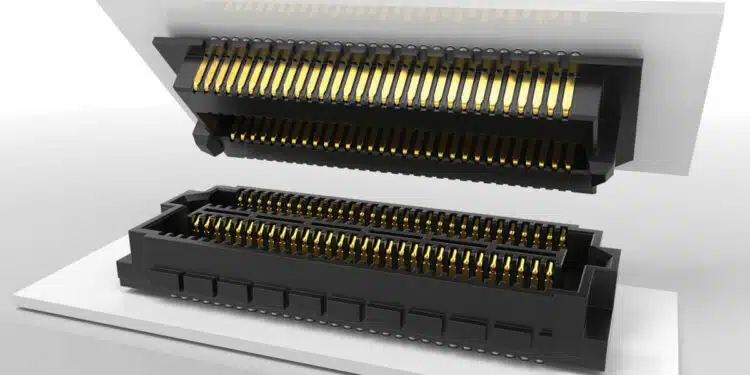The SGeT Harmonized FPGA Module (HFM) standard, announced by Samtec in 2024, aims to standardize FPGA-based System-on-Modules (SoMs).
It proposes two types of SoMs: solderable (s.HFM) for low to mid-range FPGAs and connector-based (c.HFM) for mid to high-end FPGAs.
New SGeT HFM Specification for FPGA-based SoMs Features Samtec Interconnects
SGeT HFM, announced in 2024, aims to be the first industry standard focused on SoMs using FPGAs and SoC-FPGAs.
Experienced FPGAs users recognize three main types: low-range, mid-range, and high-end. While FPGA solutions have common interfaces and protocols, higher-end devices require more power, memory, and support circuitry. SGeT HFM addresses these challenges by proposing two types of SoM.
For low to mid-range devices, solderable modules based on the SGeT OSM standard offer ease of assembly and small form factors. For higher-end FPGAs, connector-based modules support large form factors, increased logic, and high-speed SerDes.
Solderable Harmonized FPGA Modules (s.HFM) accommodate FPGAs and SoC-FPGAs from the low end to the lower mid-range. s.HFM modules use Solder-on-Module technology from the OSM standard, simplifying assembly, testing, and soldering.
BGA in s.HFM modules allows for more interfaces on a smaller footprint, improved reliability, security, signal integrity, space efficiency, and simplified manufacturing.
Connector-based Harmonized FPGA Modules (c.HFM) support mid- to high-mid-range FPGAs and SOC-FPGAs. c.HFM modules support increased I/O counts, larger form factors, and higher speeds using high-speed board-to-board connectors.
Samtec offers the widest range of high-speed board-to-board and backplane interconnects, backed by engineering support, online tools, and exceptional service. Their high-density array connectors provide various pitches, stack heights, and configurations for optimal routing, grounding, and design flexibility.
AcceleRate® HP High-Performance Arrays feature a 0.635 mm pitch, delivering 112 Gbps PAM4 extreme performance and a flexible open-pin-field design.
AcceleRate® HD Ultra-Dense Slim Body Arrays feature a 0.635 mm pitch in a slim 5.0 mm width, with stack heights as slim as 5.00 mm. They include up to 400 high-speed Edge Rate® contacts, milled for a smooth mating surface that reduces wear and increases durability and cycle life. Lower insertion and withdrawal forces enable zippered unmating.
































